I’m back with the second (and final) part of “Ask a Farmer.” I promise not to make it a regular occurrence to be in your inbox two days in a row. If you missed Part One, you can go back and read it to learn more about my husband (the farmer) and read the first five questions he answered.
I’ll give the same caveat I did yesterday—my husband is only one farmer and one type of farmer. We are conventional farmers, not organic. These are his thoughts, based on his years of farming, education, and knowledge of this industry. He listens to podcasts, reads articles and books, attends seminars and workshops, and collaborates with other farmers, always wanting to learn more.
But I won’t ramble on; I’ll get to my interview with Rich.
How do you deal with anxiety about the unpredictable nature of the weather when your livelihood is linked to it?
My answer contains two parts. The first is the emotional side, where painstaking planning and execution (hard work) by our family and employees in raising crops and animals is not a guarantee of success when weather events destroy or limit our production. However, the effects of many weather events can be mitigated by flexible management throughout a season, such as having extra grass to graze for the cattle. Or planting crops that need less water in multiple years of drought.
However, other weather events, namely hail and years of drought, can ruin or severely limit our crops. Watching our work fail from these events is disappointing and frustrating, both from the effort put forth and the long-term setbacks it can cause the farm.
The second part of my answer is the financial side, where we use crop insurance and other resources to offset the risk from these weather events. We purchase crop insurance (partially subsidized by taxpayers) to insure a percentage of our crop against these weather events. Insurance protects our operation from severe shortfalls in production and revenue that could impact our operation's ability to plant the following year's crops.
What foods does it actually matter if a consumer gets “non-GMO” or not?
Here’s a definition of what a GMO is for those curious. A GMO, or genetically modified organism, is a plant, animal, or microorganism that has had its DNA changed. This is done through genetic engineering, which involves inserting, deleting, or modifying genes.1
At the sake of a cop-out, I will again point to the book (mentioned in yesterday’s post) that does a great job of detailing all things GMO and the science and safety behind it.
Currently, we do not use GMOs on our farm, but that is not because I oppose them. The crops we raise do not have that technology available. Many times, a product at the store will be labeled non-GMO, and the fact is there is not even a single GMO portion of that crop grown commercially anywhere in the world.2 The most common example is wheat.
I’m curious about glyphosate and wheat—just because I’ve heard so many people say that the reason people tolerate wheat products in Europe but not the U.S. has more to do with glyphosate than the actual wheat.
I would question the scientific merit of this statement. From the time our wheat is planted until it is harvested (and this would be almost 100% of the grain grown in the U.S.), it is never sprayed with glyphosate.3 Glyphosate is only sprayed before and after the crop to terminate weeds (sprayed on an unplanted field).
The only time a wheat crop would possibly be sprayed with glyphosate would be to aid in harvest when the wheat plant does not naturally dry out (die) before harvest. (This is not something we do on our farm.) If this were done, there are strict label guidelines and timing to ensure it does not leave residue on the kernel. (The guidelines tell you how long you must wait to harvest after spraying.) This is rarely necessary, given the dry climates in which wheat is grown.
It is my opinion that in the European wheat climate, this practice would occur much more frequently given the (high) annual rainfall they receive, making it difficult for their wheat to dry out to harvest. Again, the book linked above touches on glyphosate as well.
Why do you calve in February when it’s so cold? Is it because of the downtime with the farm/ranch component? Cow shipping schedules? I’m assuming it’s mainly AI (artificially inseminated), so you can time it. Is that correct?
I will list the reasons in no particular order.
February is our driest month, and although it is cold, we find that using straw and wind protection results in very healthy calves. Disease incidence is lower in the cold (less disease is spread in colder temperatures). Wet conditions encountered later in the spring create their own challenges for newborn livestock and the fluctuation between warm days and cold nights.
We have an insulated, heated barn where each calf spends the first 24 hours while he/she dries off and nurses his mom. We can monitor the birth process closely and ensure calves get colostrum in a timely manner (our goal is for each calf to nurse in the first hour). The mom and calf are moved from the barn to progressively larger groups of cattle and into pastures protected from wind and snow.
Early calving allows us to utilize spring and summer grasses and have the calves old enough to travel to summer-only ranches.
Early calving provides a better market for our calves: our steers are sold as beef, and heifers are sold as cows, which we sell in the fall.
Breeding our cows is done by AI (artificial insemination) and bulls. About 1/3 of our cows are bred by AI, but most are bred by bulls. Breeding season is managed by introducing and removing bulls to have calving at set dates. The bulls are in with the cows for approximately 45 days. Then, the bulls are removed and put into separate pastures so any cow not bred won’t be bred later and calve outside our calving season.
What’s the best way to support farmers in 2025?
I would ask that consumers read the book linked earlier4 to be better informed and make buying decisions not out of emotion but knowledge.
If you made it through both posts, I appreciate you! I second-guessed myself on sending this out as one long post, thinking it was too long. After I split it into two, I wondered if two posts were too much, but it was too late. 🫠 If you didn’t unsubscribe, thank you. 🤣
Feel free to comment if you have questions (or email me!).
Lastly, thank you to my husband for taking the time to answer these questions. He did not take this task lightly—he’s always been my biggest supporter as a writer, and didn’t hesitate when I told him my idea.
I’ll be back next month with a story (probably) not about farming.
Thanks for reading! 🌱
All photos by Western Ventures Photography.
This has some great information on GMOs. It talks about animals who eat GMO crops and how it does not transfer to the animal. For example, a cow does not become the grass they eat, and chickens do not become the corn they eat.
Here’s an easy-to-read document on what foods in the U.S. can be GMO and why each GMO crop was created.
Glyphosate is a chemical used to kill weeds and grasses. It's the active ingredient in many weed killers, including RoundUp.
To be clear, Rich is not receiving compensation for plugging this book. 🤣 He does not know the farmer, but he read the book recently and felt like the author/farmer did a good job explaining farming practices to consumers—better than Rich said he could.




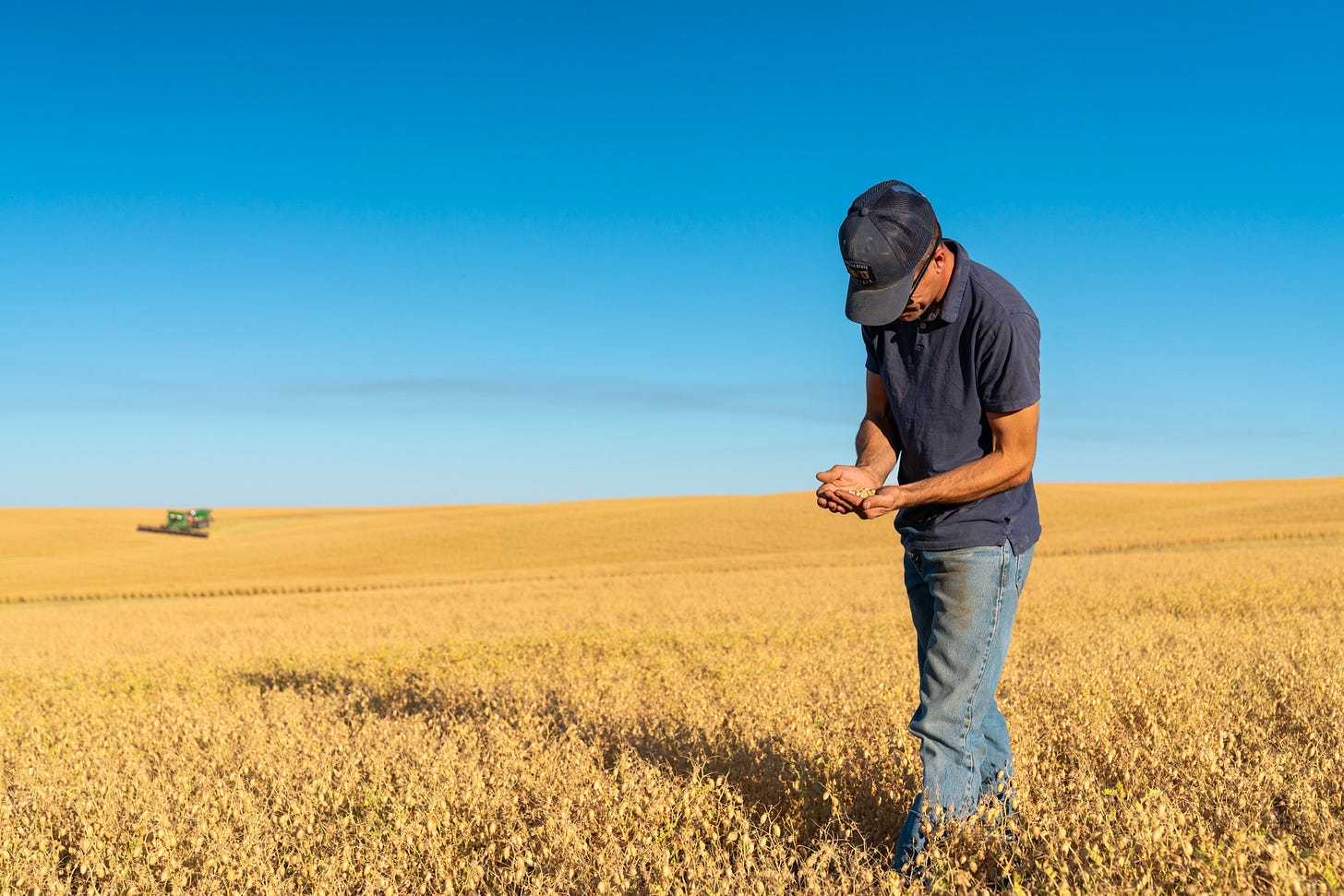
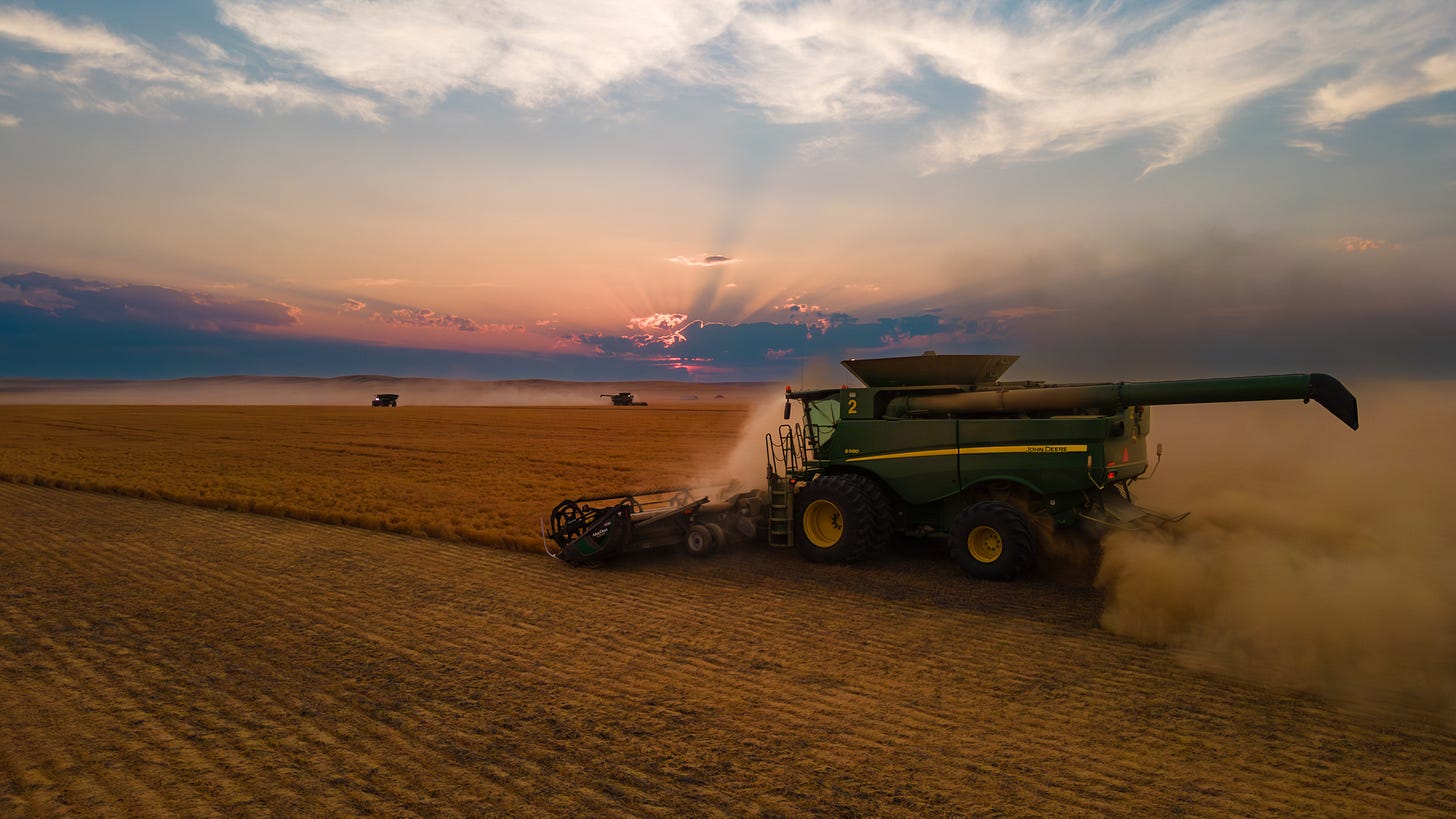
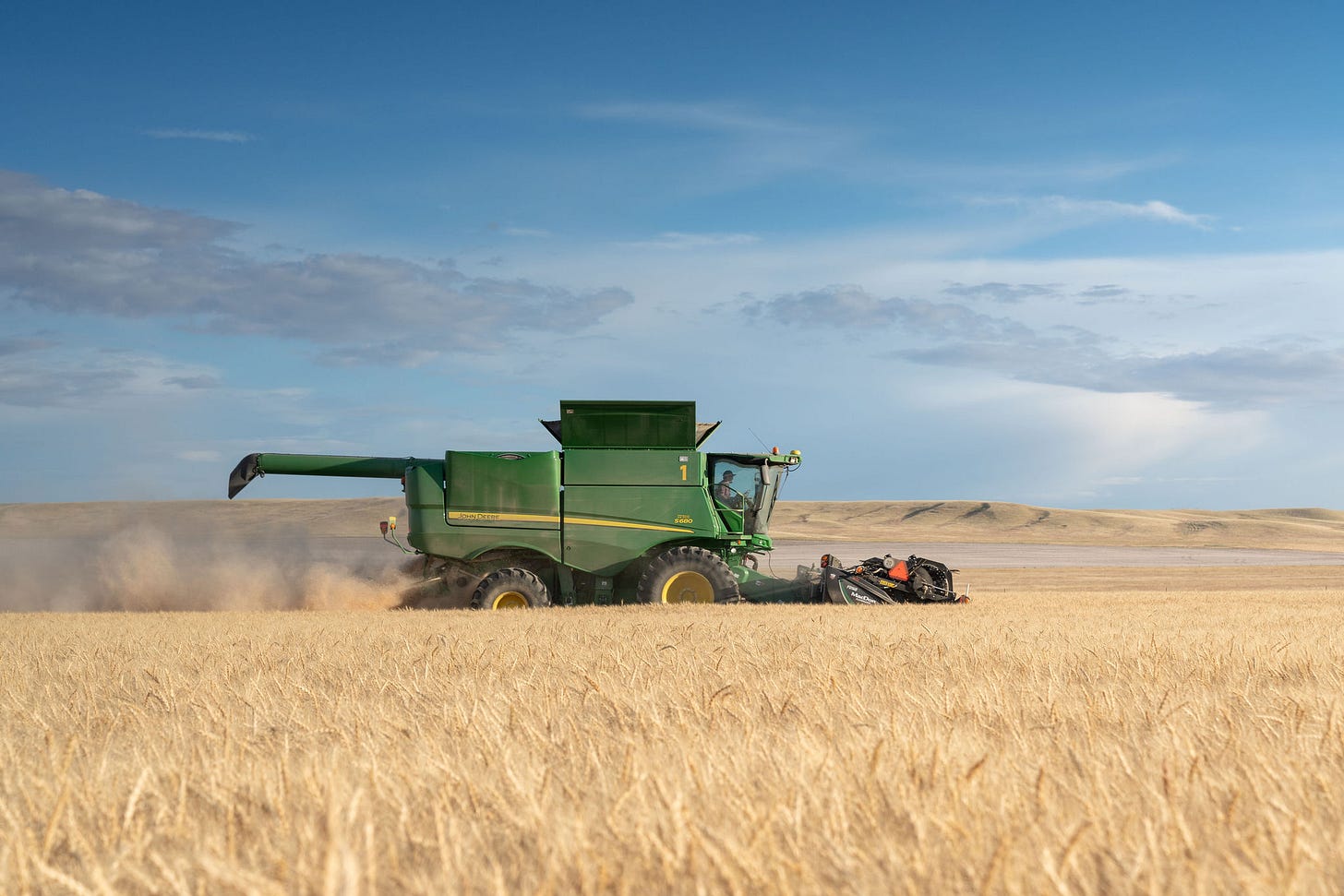

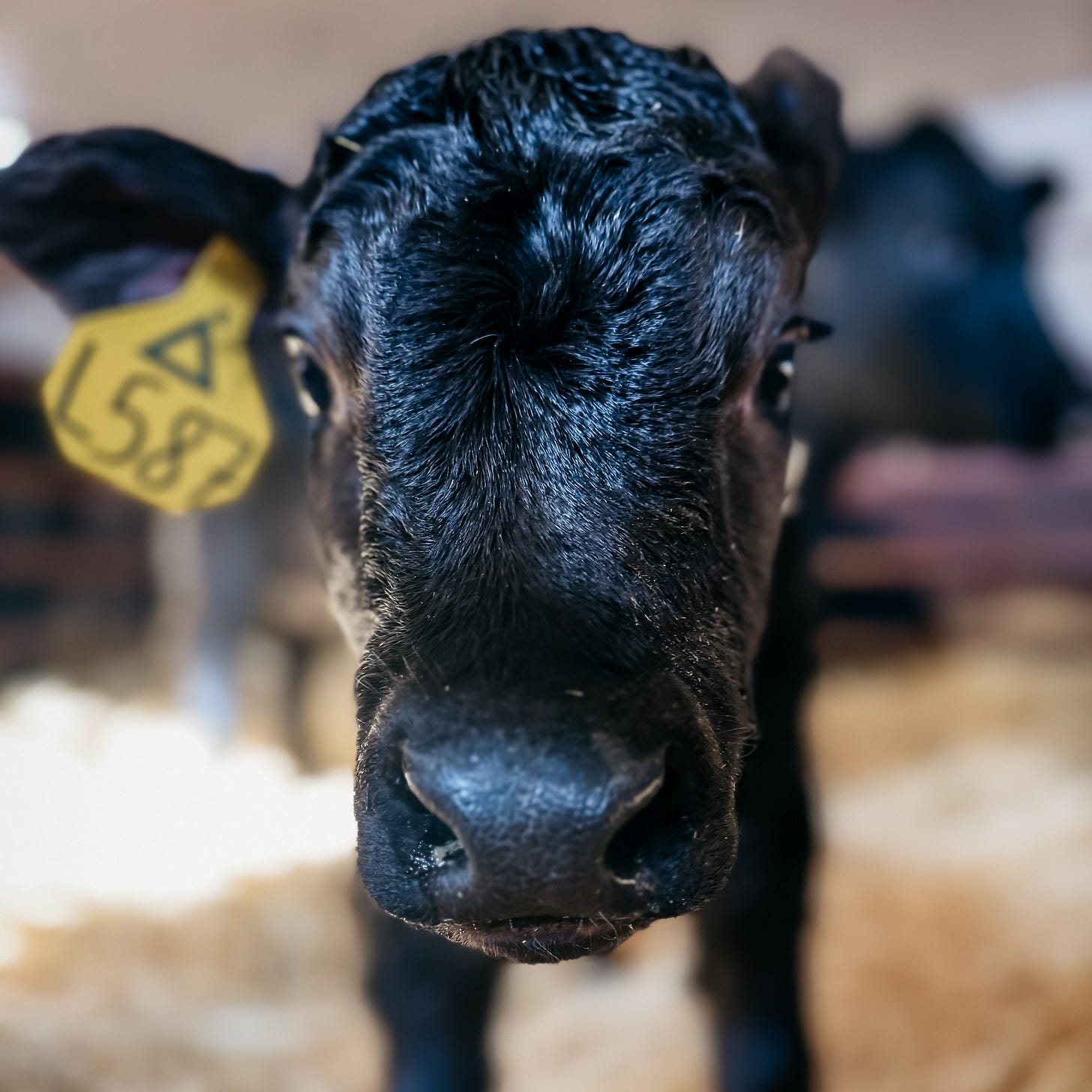
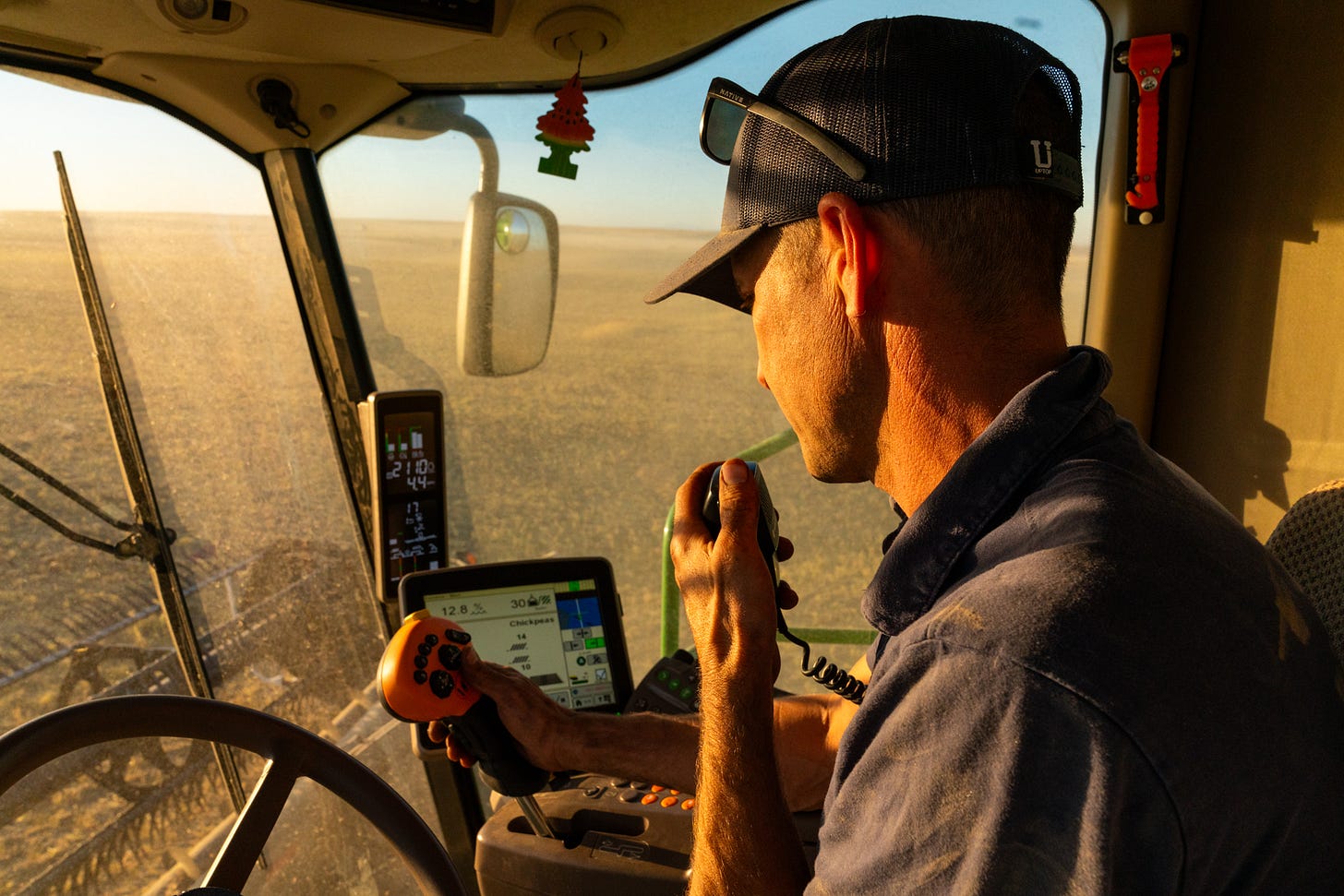
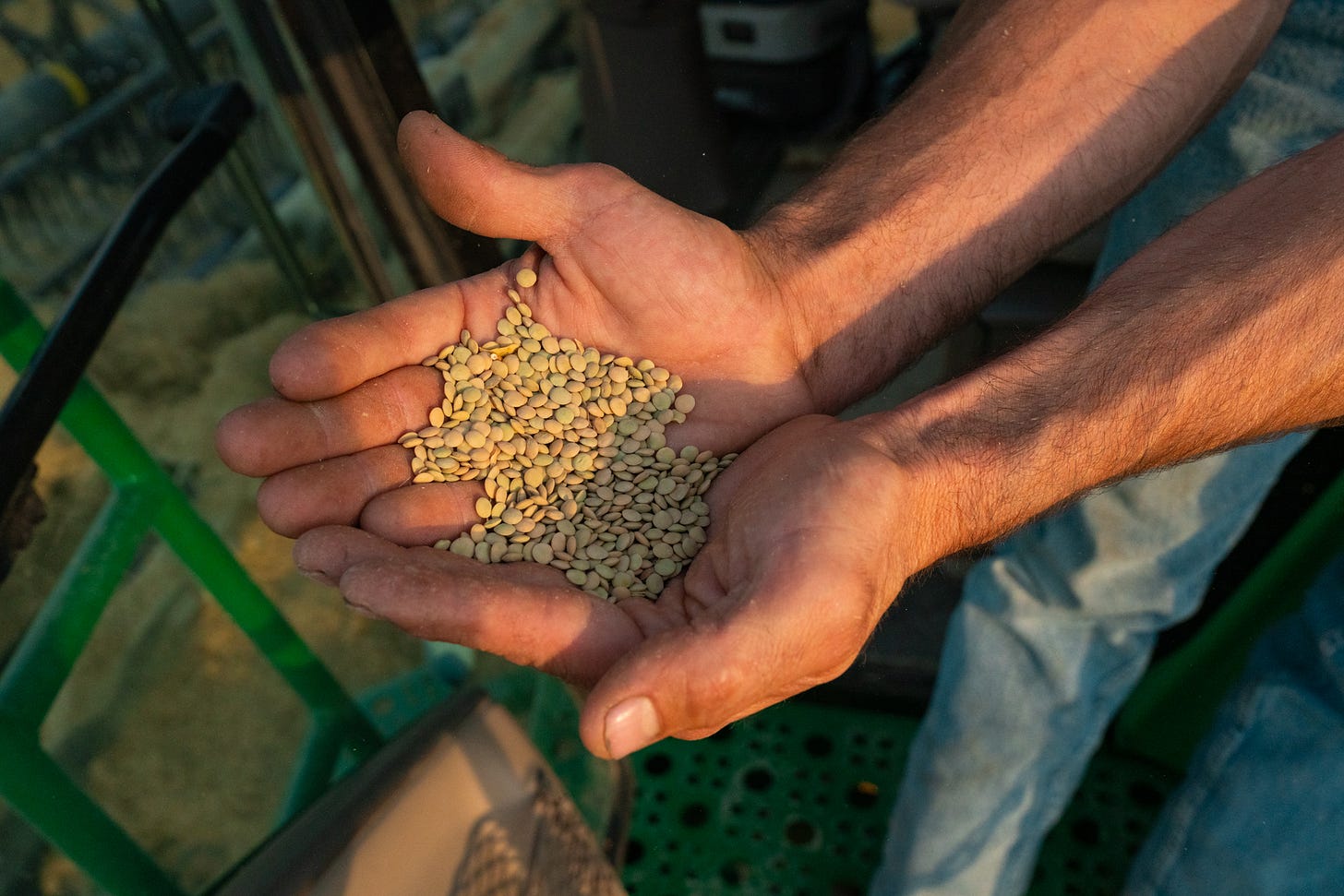
My hubby is the sprayer driver on the farm, and now I need to ask him all the glyphosate questions, curious what the regulation differences would be between US and Canada. We often have high humidity and I'm sure they sometimes have to spray the crop to dry it down.
The book sounds helpful!
These 2 posts were fun to read!... *added book to cart.* Very relatable and the the uniqueness of every operation is pretty cool. We pushed our calving date back to work with warmer weather and calve on pasture, and we are dabbling in more organic farming because of all the dang inputs with conventional. I do worry about our same arid climate and tilling required, though. Lately we have leaned into cover crops in the rotation, and wow, it sure has been nice to have winter grazing and delaying feeding cows everyday as we are needing to inch them closer to home before calving.